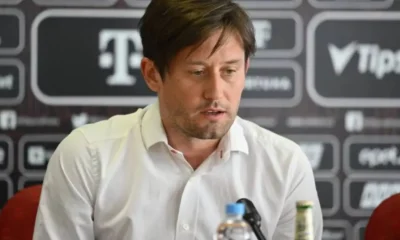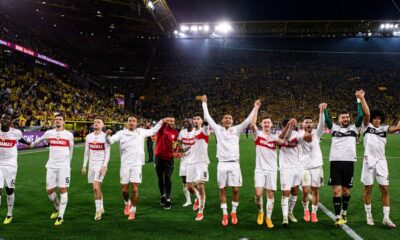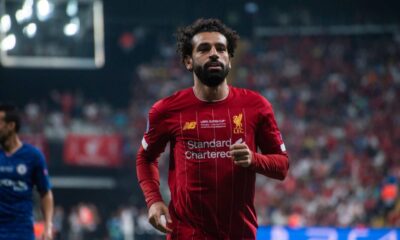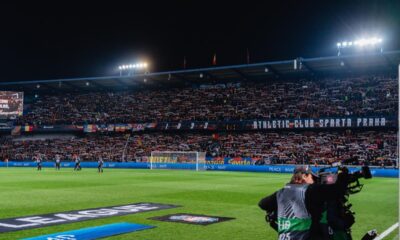Champions League
D-Day is coming up. What line-up for the game against Rapid and what to expect tactically?
Sparta is waiting for its first competitive match after a difficult preparation, which could immediately affect the evaluation of the whole season. It will play the first half of a double-header with Rapid, which will decide Sparta’s season on the European stage.
Sparta is waiting for its first competitive match after a difficult preparation, which could immediately affect the evaluation of the whole season. The first half of the double-header against Rapid will decide Sparta’s season on the European stage. What line-up should she enter it with and what can she look forward to from her opponent?
Line-up
Florin Nita is expected to start in goal. If there were any doubts about the number one position before the preparation, there should be no more. The Romanian goalkeeper showed good form in the dress rehearsal, which he confirmed with a penalty.
The injured Ondřej Čelůstka will be missing in the defensive four, so who will replace him? Although it was not the case in the dress rehearsal against Dynamo Moscow, Hancko is expected to play at left-back. Lukáš Štětina, Martin Vitík and Filip Panák are three candidates for his partner.
Only Štětina played with Hancko in the preparation and the match was excellent, so I would choose the Slovakian pair as stoppers. The left-back position is occupied by Casper Höjer, who we can expect in the starting line-up almost for sure.
The right-back position is not so certain. There are two candidates – Vindheim and Wiesner. The former is more experienced, but he hasn’t done well in recent games. The opposite can be said for the younger and much more offensive Wiesner, so I would send him on the field from the start.
The midfield trio should traditionally consist of Krejci Jr, Pavelka and Bořek Dočkal in front of them. Pavelka will probably have a very difficult role, so it is possible that Sacek or Soucek will come into play during the game.
The wings should be occupied by Karlsson – Krejci, although the Swede has not had the best preparation. His number one competitor in this position is Wiesner, who I would rather see at right back against Rapid.
On the top line, Adam Hložek. He could also benefit from the height advantage he has over the two opposing stoppers. One of them is only a centimetre taller than the other by a noticeable five centimetres.
Tactics
As expected, Pavel Vrba will choose the 4231 formation for the match. During the match, however, a quick rotation from the central three will be needed, which should change into the 4141 formation with one more retractable midfielder (Krejci Jr.), especially during the pressing.
Rapid Vienna did not like the high pressing, especially supported by the midfielders. They played in 4231 formation and the moment the ball reached the stoppers or the goalkeeper the Danish opponent occupied the opponent’s half by actively attacking in a 4141-like formation.
The spike striker prevented passes between the stoppers and actively challenged the goalkeeper’s crossing, while the two midfielders blocked possible passes to the two defensive midfielders. The wingers then pressured the stoppers right at the points of possible passes to the flankers.
This forced the midfielders to either make risky passes through a condensed midfield, or kick-offs that could have been waited for by a full four-man defence complete with a defensive midfielder.
In Spartan’s version, Pavelka would probably be drawn with Dočkal, leaving Krejčí Jr. in the background, who could capitalize on his aerial skills, especially against the tall Rapid striker Kara, who has scored three goals in the last three games.
In the attacking phase, Rapid often combined on the flanks in the last cup game, where the winger and midfielders outnumbered the opponents’ defensive lines and combined to get into firing positions in the middle of the pitch with several quick short one-touch passes.
In situations like this, the pair of Krejci Jr. – Pavelka will need to operate compactly and help the backs and wingers on the flanks. It is the wingers who will have to consistently return to the defence.
A challenging role awaits Pavelka, who should be involved in the pressing and then work well defensively.
Rapid dealt with similar situations from the wings with most of the players’ runs into the box, and there was a quick tandem or combination between just the winger and the fullback that resulted in a centre. In this respect, Wiesner in particular will have his work cut out for him to stop the Rapid’s offense.
However, we have to take into account that in the cup match, in which he won 6:0, he was opposed by a third-league team, which also played with ten men from the 30th minute onwards. It is therefore possible that Sparta will not be able to attack with such a high number of offensive players.
In the last preparatory match against Copenhagen, the Vienna team stuck to the orthodox 4231 formation. The wingers then blocked possible passes to the wing.
In such situations, the play could lead through the square created by the 4231 formation, which would be formed by Pavelka and Krejci Jr. with the stoppers. These would be picked up by Dočkal, who also has better height attributes than most of the opponents’ defensive midfielders.
Sources used: Transfermarkt, SK Rapid












